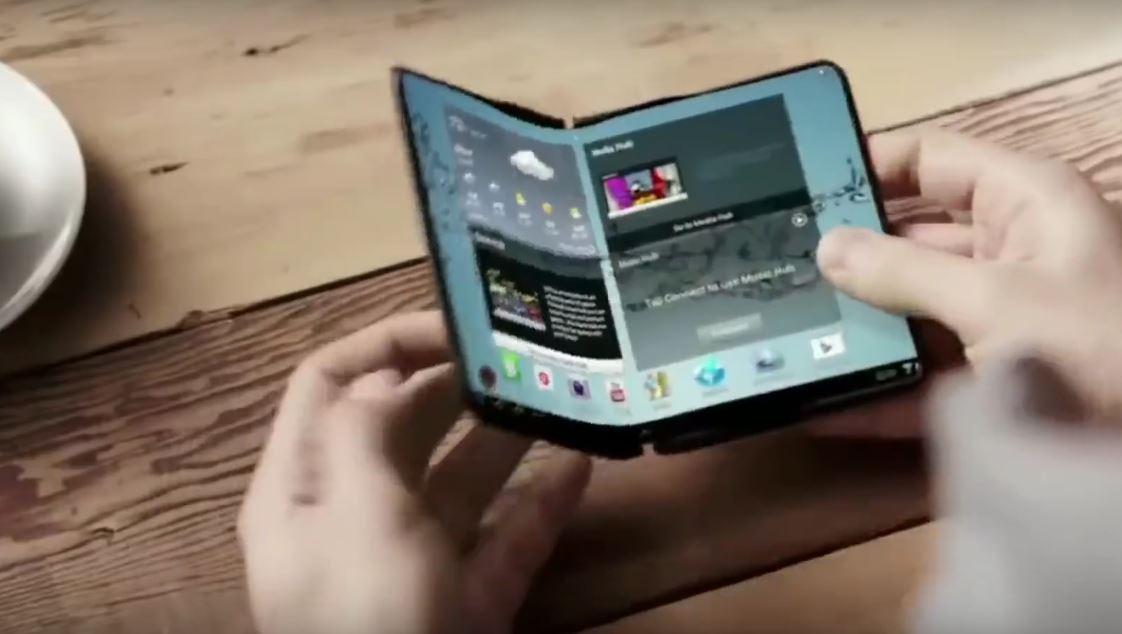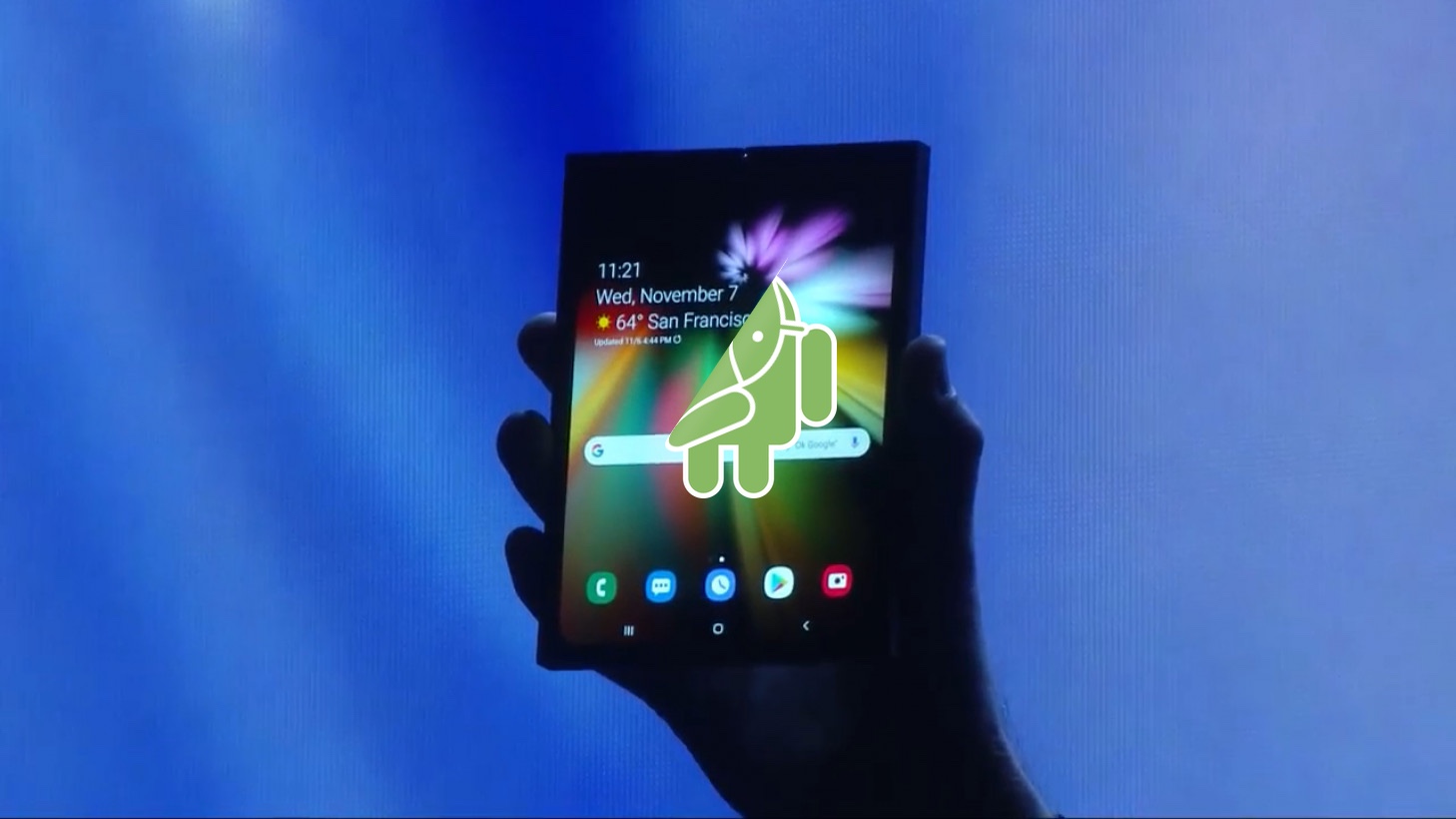
Are you planning on getting a foldable phone in the near future? If you’ve been watching tech news at all, you’ve likely heard about folding smartphones coming to market—just around the corner. For example, the Samsung Galaxy X is going to feature what it calls an “Infinity Flex Display,” which is an awful fancy phrase for a folding screen. LG might be entering the fray as well, and its technology could be integrated with other phone makers, including Huawei. The parade of new announcements is unlikely to stop, and by the end of 2019, you’ll have at least one friend who’s bought one.
But here’s the problem: foldable phones aren’t a true technological innovation that spurs greater user productivity. They’re a gimmick. And eventually, when consumers figure that out, the fad will disappear.
The cycle of foldable phones

What evidence is there for this, other than just my intuition? For starters, phone manufacturers have been toying around with the idea of a foldable phone for years. Samsung was setting the stage for a future with foldable smartphones in 2017. But wait. They were also setting the stage for foldable phones back in 2013, promising they’d be on the market by 2015. Other brands have teased foldable phones over the same time period.
To be fair, a six-year gap isn’t unheard of for the development of new technology. If Samsung was starting to research the possibilities in 2013, it would make sense that they’d only now be ready to integrate that technology in a flagship phone product.
However, it doesn’t seem likely that technological holdups are the only reason for the delay. Instead, it’s like that the costs of the technology have not, historically, been enough to justify their inclusion in a consumer product. That could be because the technology is ridiculously expensive to produce, or because—shockingly—there isn’t much consumer demand for a foldable phone (which we’ll explain more in detail in a subsequent section).
The need to sell new phones

We also need to think about the manufacturers’ need to constantly sell new phones. Most manufacturers live or die by their ability to sell an upgraded phone model to customers, year after year. It’s why Apple unveils a new iPhone with such regularity, even if there aren’t many new features to add, and why high-end smartphones keep inching to be more expensive. Aside from camera improvements, there aren’t many hardware upgrades that justify the price increase.
Accordingly, companies are desperate for any new feature that could give them an edge over the competition. Any new innovation that truly distinguishes them from a competitor could be the feature that gets customers to switch. In the eyes of manufacturers, foldability is that new feature. But new features don’t have to be truly innovative or game-changing in terms of functionality or convenience; they just have to look cool and/or be different.
Foldable phones are different than what we’re used to, and that’s probably enough to sell a new model. But as soon as another feature emerges to look cool and distinguish itself from the competition, customers will forget about foldability.
The problems: bulkiness and longevity
Foldable and bendable screens have been an accessible technology for years, but they’ve been less than viable because they have a handful of inherent weaknesses. For one, foldable phones are inherently bulkier. In order to accommodate both halves of the display and the high-tech hinge underneath, these phones are larger and more cumbersome to carry around. If there are any inherent advantages to foldability, it has to do with the portability and convenience of using the phone. If the tradeoff is reducing that portability and convenience, the benefits are practically nullified.
We also need to consider the potential longevity of such a phone. While the close cousin of foldable screens, bendable screens, promise to offer more durability with a flexible screen that won’t break as easily, longevity isn’t a guarantee with either technology. Foldable screens rely on an internal hinge, which like any moving part, represents a vulnerability. It will weaken over time, potentially introducing more problems than it solves.
Flat consumer demand
The eager techies who gobble up every new technology are likely excited about the concept of a foldable phone, but otherwise, consumer demand is flat. Tech experts have suggested that while gadget lovers will take to the phone instantly, other consumers will be taken aback by the device’s limited usability and low mainstream appeal.
Add to that the idea that foldable phones are going to be ridiculously expensive; Samsung is projecting a cost of $1,980. If you’re going to pay double or more for a phone with a feature that you didn’t really want in the first place, would you really go through with the purchase? Probably not. And if the feature isn’t all it’s cracked up to be, even the most gadget-hungry consumers will quickly move onto the next latest and greatest item.
The need for true innovation

If there’s a problem at the center of the foldable phone development, it’s the need for—and lack of—true innovation in the smartphone field. Companies are desperate to produce a phone that’s newer and better than their previous models and latest models of their competitors, but there hasn’t been a truly game-changing innovation in years. The emergence of tablets and wearable devices like smartwatches came close to disrupting the industry with a new way of engaging with technology, but most of us still have a smartphone in our pockets that closely resembles the first iPhone, from way back in 2007.
I respect the development of the foldable phone, and even if only the most hardcore techies are willing to pony up the $2,000 necessary to buy one, it’s probably going to sell. But it’s ludicrous to suggest that this is a novel, game-changing technology, or the wave of the future for smartphones. Instead, this is a mere gimmick, meant as a short-term measure to generate more phone sales without adding something that truly improves the user experience.
As a fad and a gimmick, it’s going to quickly die out.
Get the TNW newsletter
Get the most important tech news in your inbox each week.





